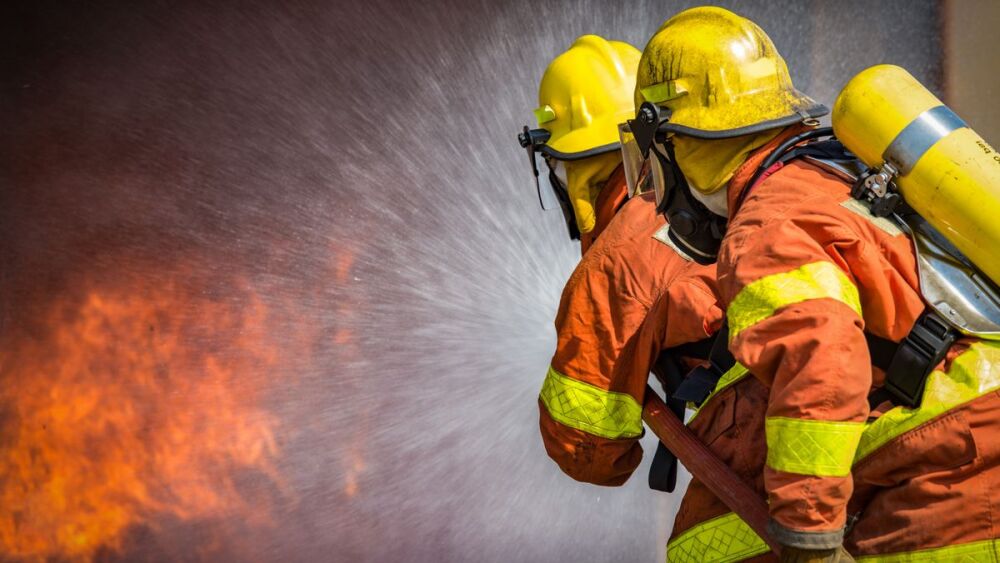Sponsored by OnScene Solutions
By Yoona Ha, FireRescue1 BrandFocus Staff
About 46 percent of firefighters have experienced pain from a strained or sprained muscle on the fireground. But for more than half of firefighters (about 57 percent), most muscular injuries happen outside of fireground operations.
It’s no secret that back-related injuries account for most of those injuries and accidents. For a long time, they’ve been a headache for departments, which not only have to deal with unexpected absences but also worker’s compensations claims that, on average, cost $9,700 and up per person.
In response, the National Fire Protection Association released its standards for fire department occupational safety and health programs. A growing number of top fire service leaders have also increased their commitment to preventing back-related injuries on the job. But the surprising truth is that many firefighters still hold onto incorrect assumptions about what it means to protect your back.
Turns out, according to those who train first responders and law enforcement officials on how to prevent workplace injuries, there are many misconceptions out there.
Here are a few back injury misconceptions to watch for:
MYTH 1: SPEED IS OFTEN THE ANSWER
When you’re in a rush (an everyday occurrence for most firefighters), it can be tough to pay attention to whether you’re using the proper techniques for lifting. Even if your department has offered ergonomic and lifting training, when you’re on the go, it can be tempting to rush through potentially dangerous tasks, like lifting objects overhead.
“Over the years, fire apparatus have grown taller, and we’ve seen more people hurt their backs as a result. It’s almost a universal problem,” said Clay Horst, general manager of OnScene Solutions, a manufacturer of premium apparatus equipment that aid in swift, safe responses.
Bryan Fass, a fitness trainer who specializes in injury prevention for first responders, agrees:
“Most firefighters assume that speed is the answer for everything, so instead of breaking tasks down to manageable steps where they can use better control, they just move through the tasks as quickly as possible,” said Fass, president and owner of Injury Prevention Systems.
That’s where lifting tools can help firefighters slow down. With just the push of a button, cargo lift systems, like the X30 Cargo Lift System, can help firefighters lower up to 500 pounds from high apparatus compartments. The X30 features 30 to 36 inches of downward travel, positioning gear at the ideal height for better ergonomics. For even more ease, departments can opt for the optional tray with lay-down front and back lip, which eliminates lifting cargo over the tray’s lip.
MYTH 2: LIFT WITH YOUR LEGS
As the growing body of research suggests, back injuries are commonly caused by improper lifting techniques, and firefighters are more prone to feeling back pain because of their repeated exposures to heavy lifting.
Even the most seasoned firefighter can find it daunting to move objects that weigh more than several hundred pounds. The reality is that even if you know proper lifting techniques, placing significant demands on your musculoskeletal system can get extremely risky.
As a first responder, you may have heard the mantra, “Lift with your legs and not your back.” Your leg muscles are stronger than your back or arm muscles, so it’s actually dangerous to use your weaker back muscles to lift heavy objects without proper back support.
But as Fass points out, firefighters may think they’re following this advice, but they just don’t have the leg muscles to actually do the heavy lifting.
“Most firefighters think they’re lifting with their legs, but because of their sedentary lifestyle, they’ve developed what I call a sitting problem that causes muscular imbalances that make it hard for you to fire up your glutes,” said Fass.
Asking firefighters to stretch more and use mobility tools, like foam rollers, is a good start, but from a departmental perspective, you want to protect those who don’t end up stretching enough. If you want to more effectively lower the chances of workplaces injuries, consider getting a lifting tool for your department.
“A lot of fire service leaders are recognizing that getting a cargo system is actually more cost-effective in the long run, because it prevents injuries that would lead to $20,000 to $50,000 in lost productivity costs and workers compensation claims,” Horst said.
If a cargo lift system isn’t in your department’s budget, consider other cargo slide solutions, like a down-and-out slide that delivers a 30-degree access angle and up to 250 pounds of capacity.
MYTH 3: BEING PHYSICALLY ACTIVE IS ENOUGH
Promoting fitness for firefighters is hardly a new wellness initiative in the fire service industry. The NFPA established standards on fitness programs for firefighters and outlines a complete health-related fitness program, and there are countless resources available that tout the benefits of exercise.
Although regular exercise does decrease your risk of death, injury, disability and disease, some movements do inevitably lead to injury when repeated over and over. These unhealthy repetitive motions take a toll on your body over time through the cumulative wear and tear of the muscles.
“The more you have to reach down and forward, over time you’re just putting these great loads on your back that you can’t dissipate,” said Fass. “Even if you’re strong and heavy, you’ll ultimately feel pain from the cumulative pressure that’s been adding up.”
Why not have a tool that does the heavy lifting for you? Having a lifting system literally takes the pressure off the backs of firefighters.
“What PPE, apparatus and lifting systems have in common is that they’re all designed to make firefighters’ jobs easier and safer,” said Horst.
Rethinking your assumptions on back injuries can help you move better without getting hurt. Take the time to think of a proper lifting strategy, develop your leg muscles to use them for lifting, avoid repetitive movements that damage your muscles over time and consider getting the X30 Cargo Lift.


